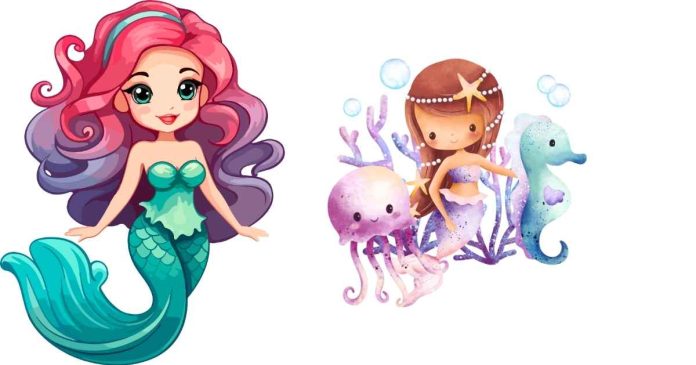Mermaids, as they are traditionally depicted in mythology and folklore, do not exist in the way they are often portrayed—half human, half fish. Despite being a popular part of mythologies, literature, and pop culture, there is no scientific evidence to support the existence of real mermaids.
Origins of Mermaid Myths:
The idea of mermaids has appeared in cultures around the world for centuries. Many stories depict them as beautiful, alluring creatures with the upper body of a human and the lower body of a fish. Here’s a brief look at why mermaid myths persist:
- Ancient Cultures: The concept of mermaid-like beings dates back to ancient times. In Greek mythology, there are stories of sea nymphs or sirens that lured sailors to their deaths with their songs. These creatures were often depicted as half-woman, half-bird, but similar imagery later evolved into mermaids.
- Sailor Tales: Throughout history, sailors would often share stories of mermaid sightings while at sea. These tales could have been influenced by manatees, dugongs, or other marine animals with features that could have been mistaken for a mermaid by a weary sailor seeing them from a distance.
- Misidentified Sea Creatures: Some researchers believe that many mermaid sightings were likely based on misidentifications of sea creatures, particularly manatees or dugongs, large marine mammals with a tail that could be mistaken for a mermaid’s lower half, especially from a distance or in poor visibility.
- Cultural Symbolism: Mermaids have also served as symbols of various ideas: beauty, mystery, danger, and even sexuality. In many cultures, mermaids were considered symbols of the unknown and the dangers of the sea. They may represent a mix of allure and peril, reflecting human fascination with the ocean and its mysteries.
Notable Mermaid Sightings:
Throughout history, there have been numerous accounts of mermaid sightings, but these have been largely discredited as hoaxes or misidentifications:
- The “Feejee Mermaid” (1842): This was a famous hoax created by showman P.T. Barnum, who exhibited a “mermaid” that was a grotesque, stitched-together body of a fish and a primate. It was exposed as a fake, but the story contributed to the enduring myth of mermaids.
- Modern Claims: There are occasional reports of mermaid sightings, but they are typically either hoaxes, misunderstandings, or influenced by folklore and popular media.
Why Do People Believe in Mermaids?
The allure of mermaids is tied to their mysterious nature and their connection to the vast, largely unexplored ocean. Here are some psychological reasons why the mermaid myth endures:
- Mystery of the Ocean: The ocean has been a source of mystery for centuries. We know more about outer space than we do about the depths of the sea, which fuels imaginations about unknown creatures lurking beneath the waves.
- Storytelling: Mermaids are a perfect element for storytelling—they can be part of romantic, adventurous, or cautionary tales. Their appeal as magical beings who bridge the world of humans and the ocean adds to their charm.
- Pop Culture: From Disney’s The Little Mermaid to movies like Pirates of the Caribbean, mermaids have become a beloved part of popular culture, which keeps the myth alive in modern times.
Scientific Perspective:
From a scientific standpoint, mermaids are considered a mythological creature with no biological basis. No evidence, fossils, or credible sightings have ever been documented. While marine biology and deep-sea exploration continue to uncover fascinating new species, there is no evidence of humanoid, half-fish creatures in the oceans.
Conclusion:
While mermaids don’t exist as real creatures, their mythological presence is very real in culture, art, and folklore. They represent human fascination with the sea, mystery, and the unknown. So, while we can’t expect to find real mermaids swimming in the oceans, we can certainly continue to enjoy their stories and symbolism.


